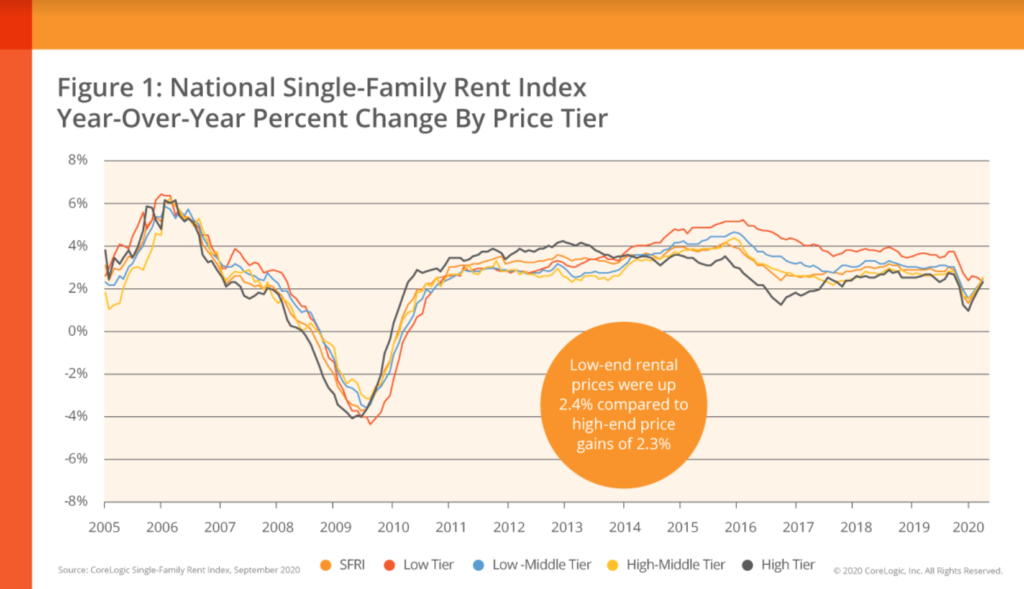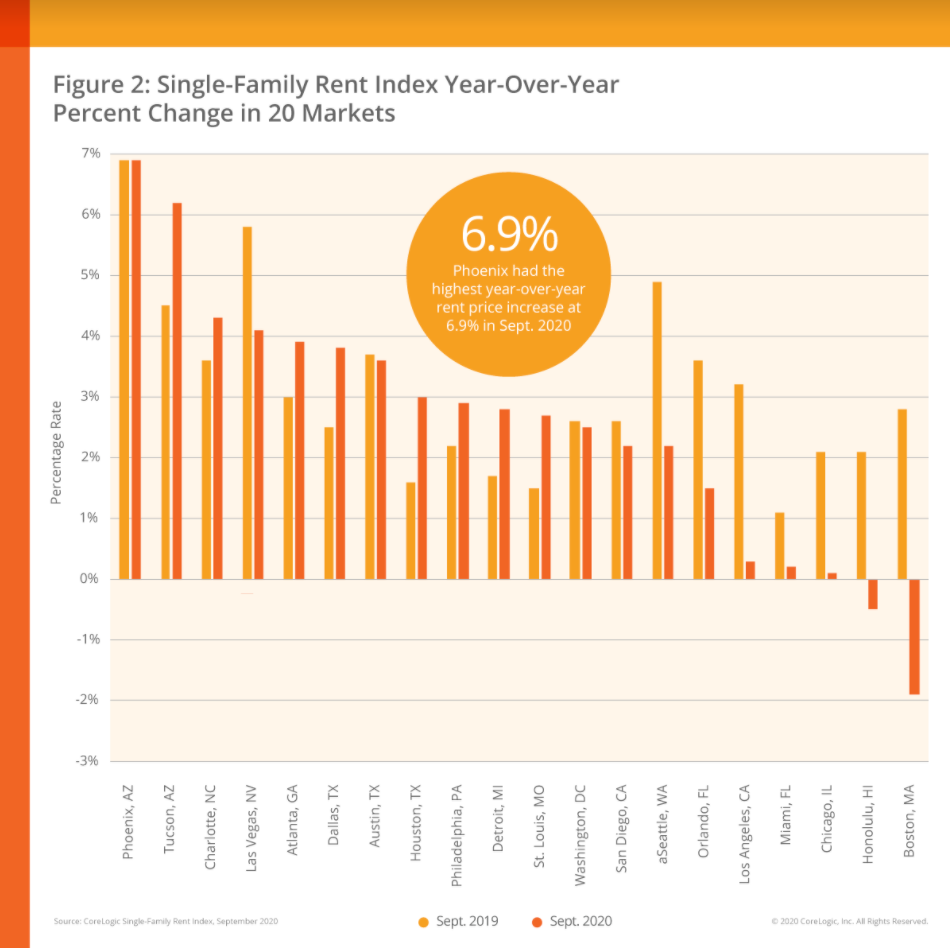Inman News
Rent for a single-family home grew by 2.5% in September, the largest increase since March.
While still down from last year, September rent prices have grown at the highest rate since the start of the pandemic.
According to the latest data released from CoreLogic, rent for a single-family home in the United States grew by 2.5 percent year over year. The growth, down from 3 percent in September 2019, is the highest increase logged since the pandemic broke out — but this indicates a tight market and low inventory rather than economic and health-related improvement.

CoreLogic
“Single-family rent prices regained strength in September and were just half a percentage point shy of their pre-pandemic national growth rate,” Molly Boesel, principal economist at CoreLogic, said in a press statement.
Rent increases were stable across affordable and high-end homes even as homes worth less than 75 percent of a region’s median saw the biggest drop compared to last year. Demand for rentals remains strong across the country but Phoenix and Tucson, Arizona, and Charlotte, North Carolina, led the list of cities with the fastest-growing rent prices at 6.9, 6.2 and 4.3 percent, respectively.
While Honolulu and Boston have vastly different economies, both saw their rental markets devastated by the pandemic with a 2.9 percent drop in average prices — in the former because of pandemic-travel restrictions and in the latter because of the high number of students who left campus.

CoreLogic
Early in the pandemic, some analysts predicted an outright recession and drop in everything from rentals to home value growth. Instead, demand has dropped most heavily in cities whose industries depend heavily on tourism or education. Other cities are seeing more of a curved effect in which high-end properties rent fast while those most affected by unemployment struggle to make rent payments and, in doing so, drive down demand.
“The strength in rent growth was driven primarily by mid-to-high priced rentals, which have regained their lost momentum in late-spring,” Boesel said. “Lower-priced rentals are still the furthest below their early 2020 growth rates, which is a sign that many lower-income households may be struggling to meet rent payments.”
